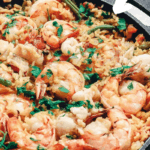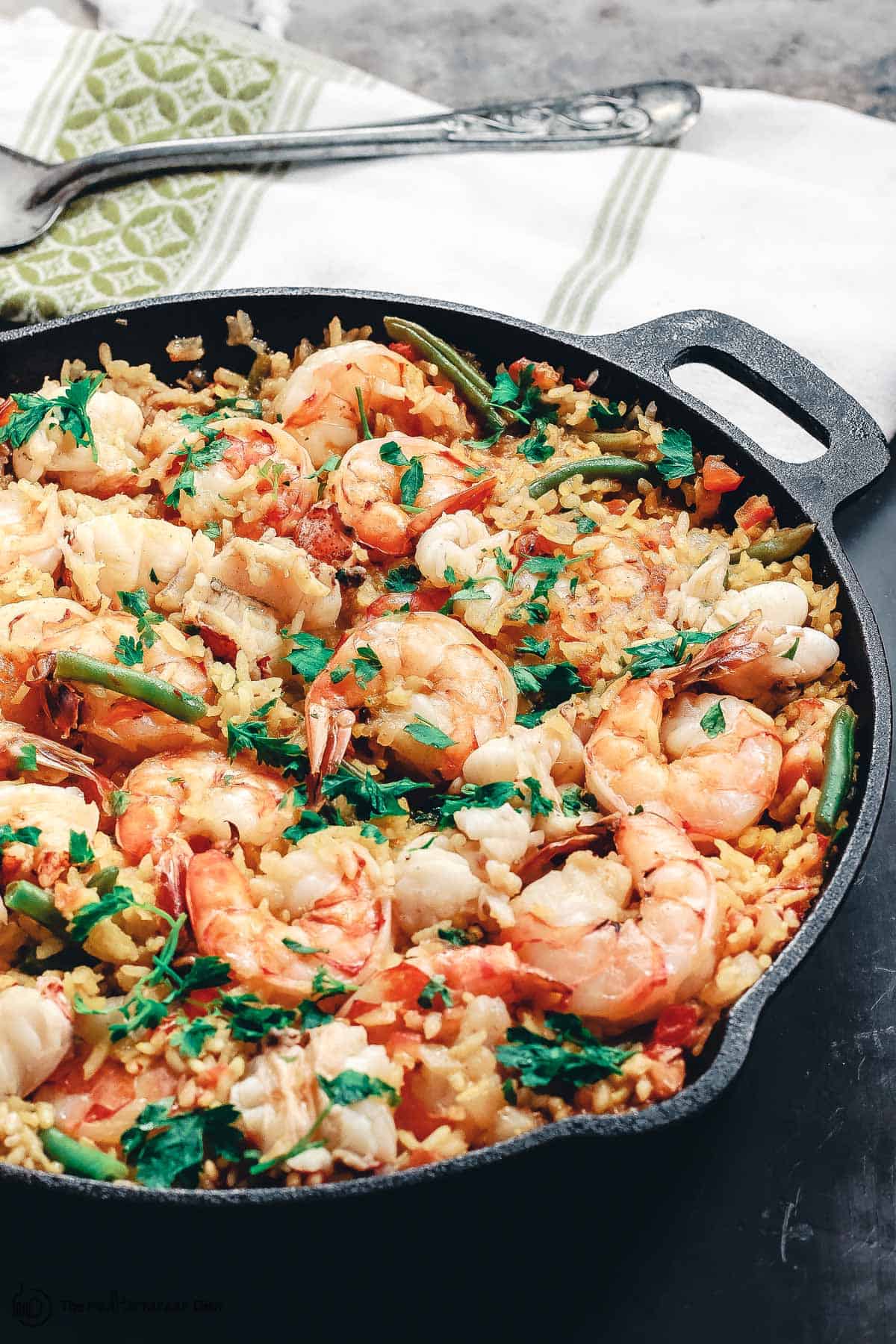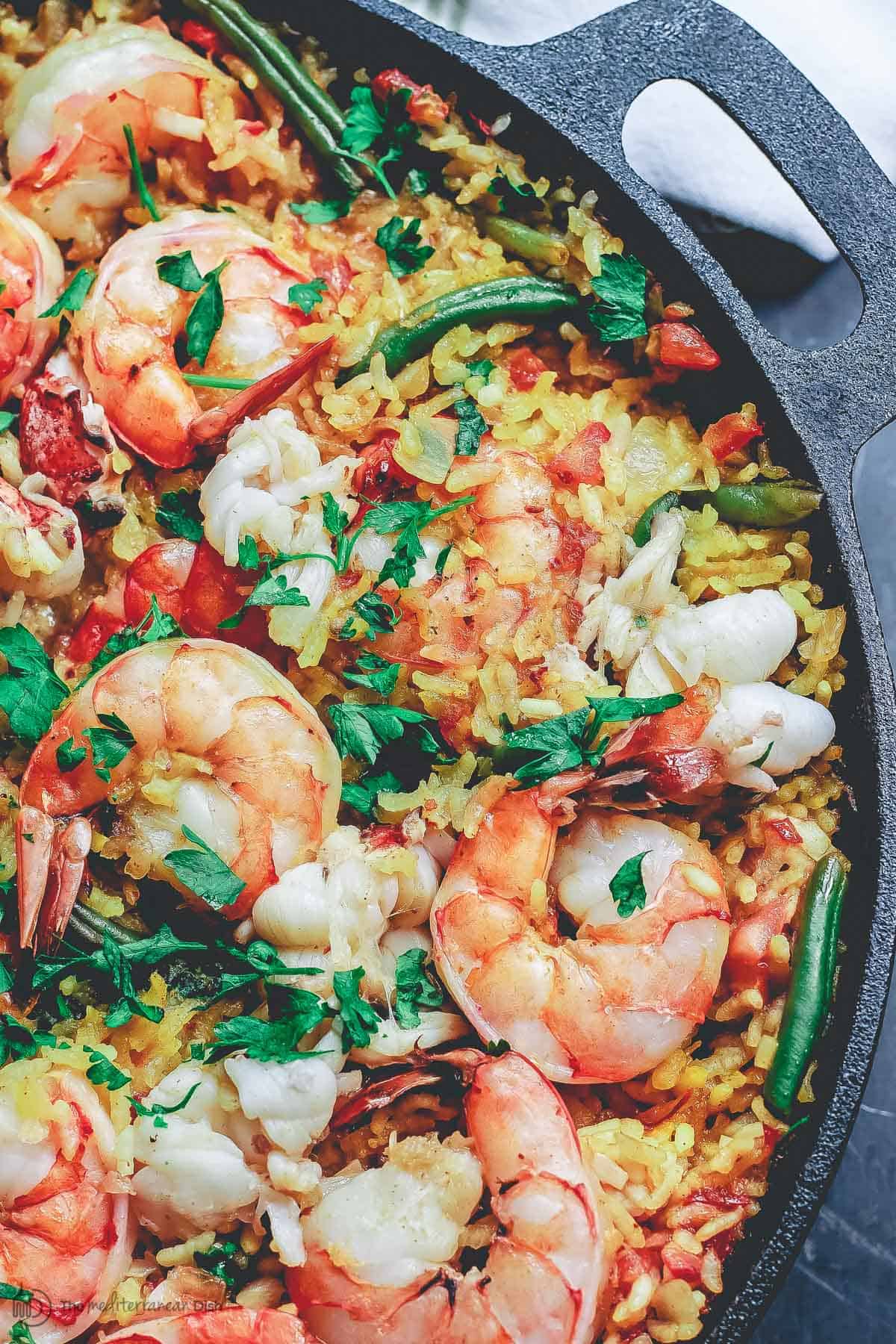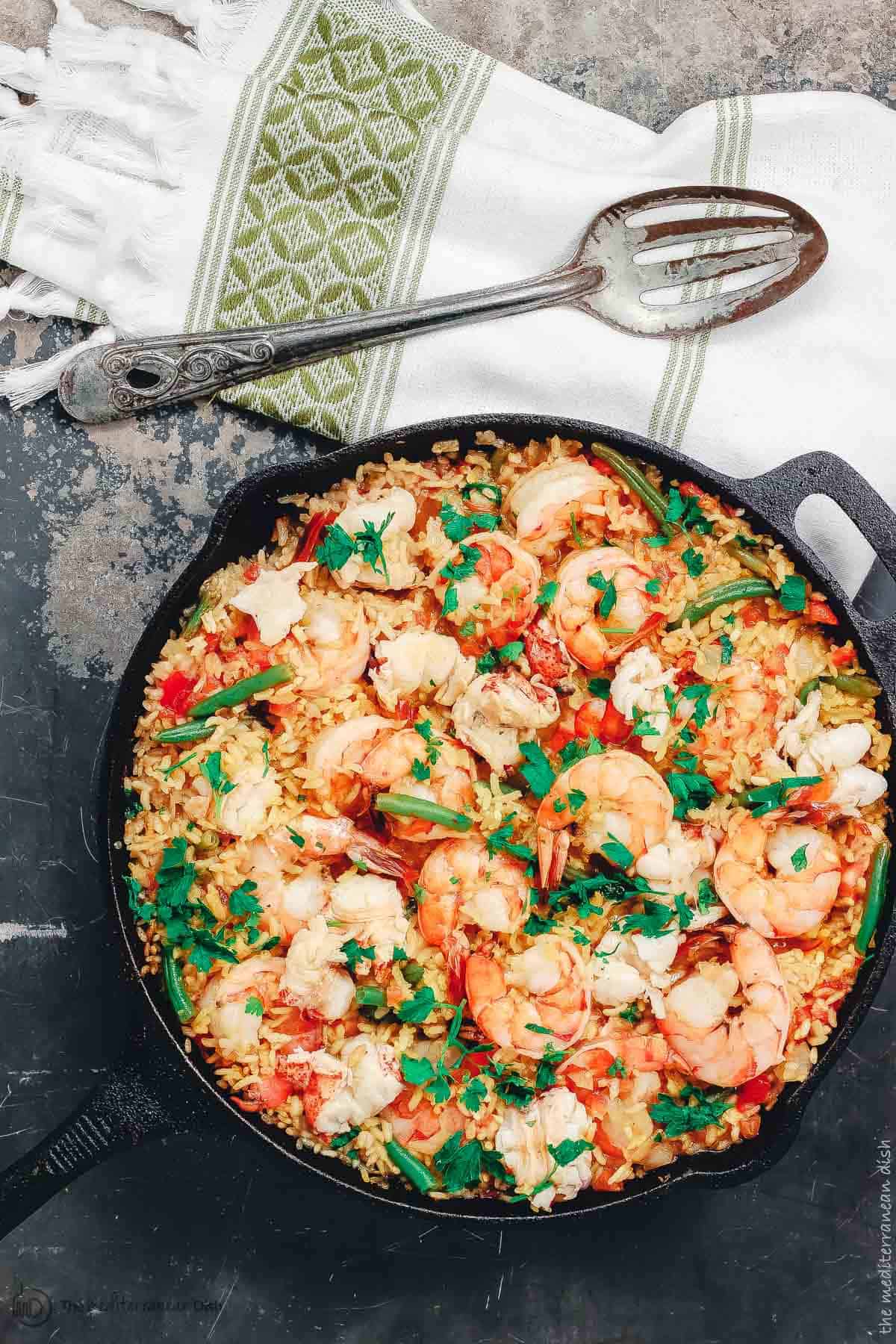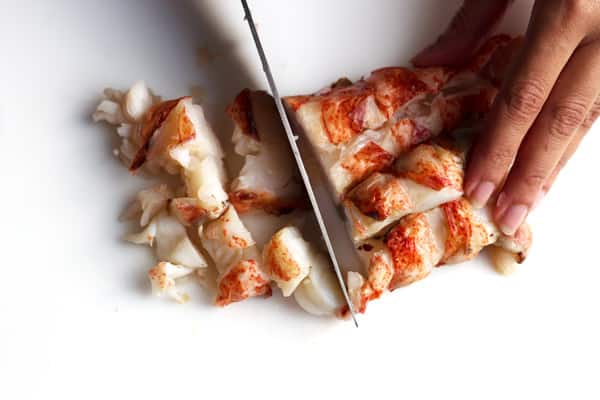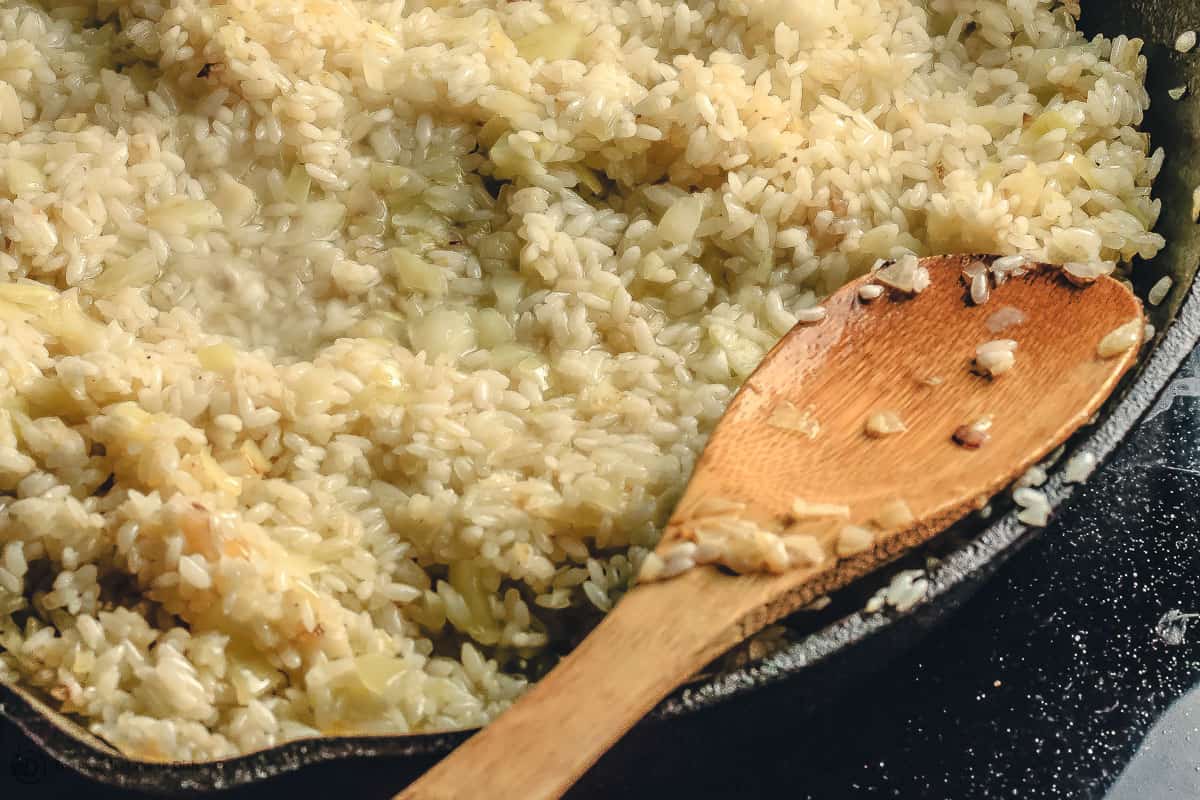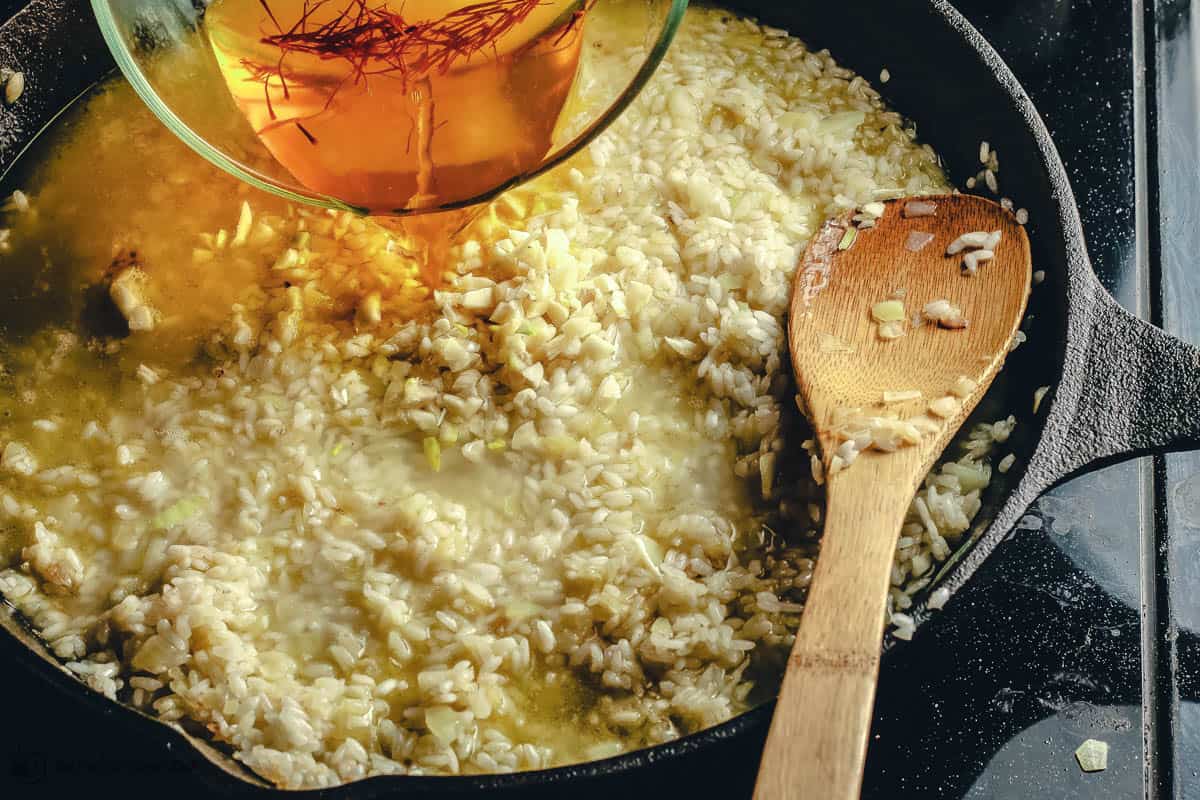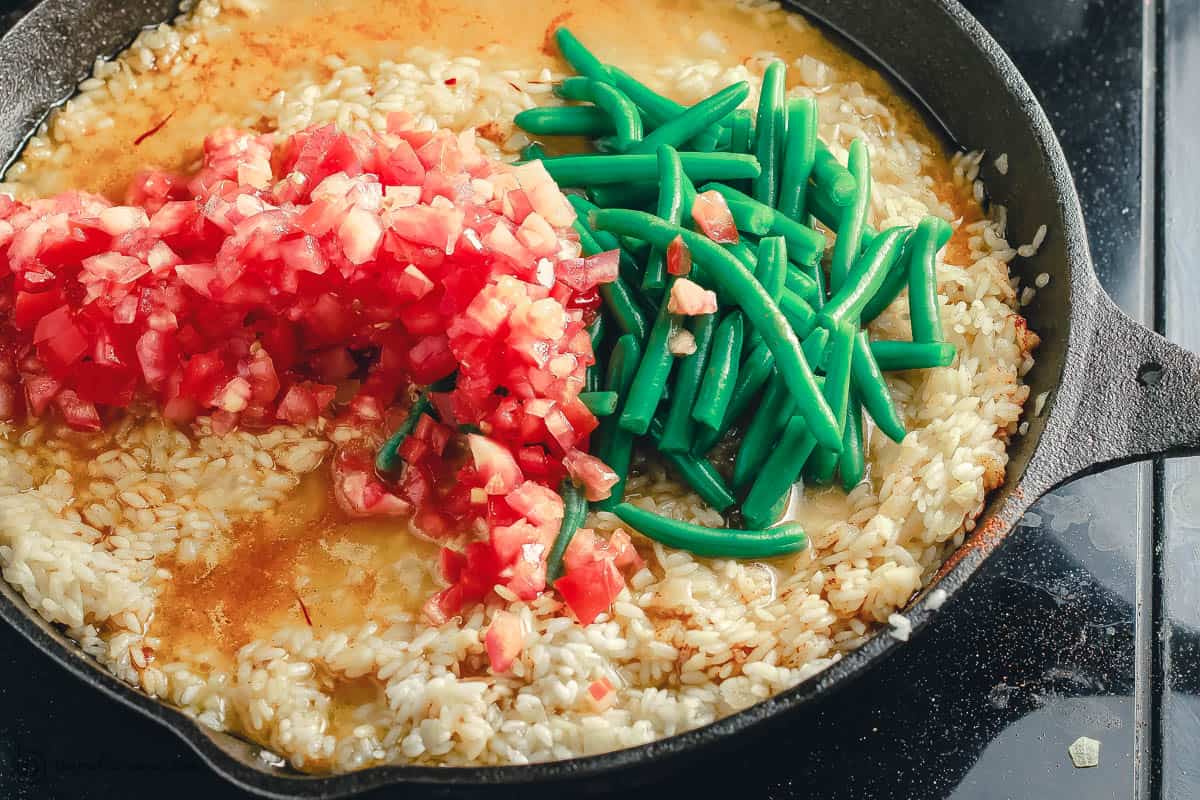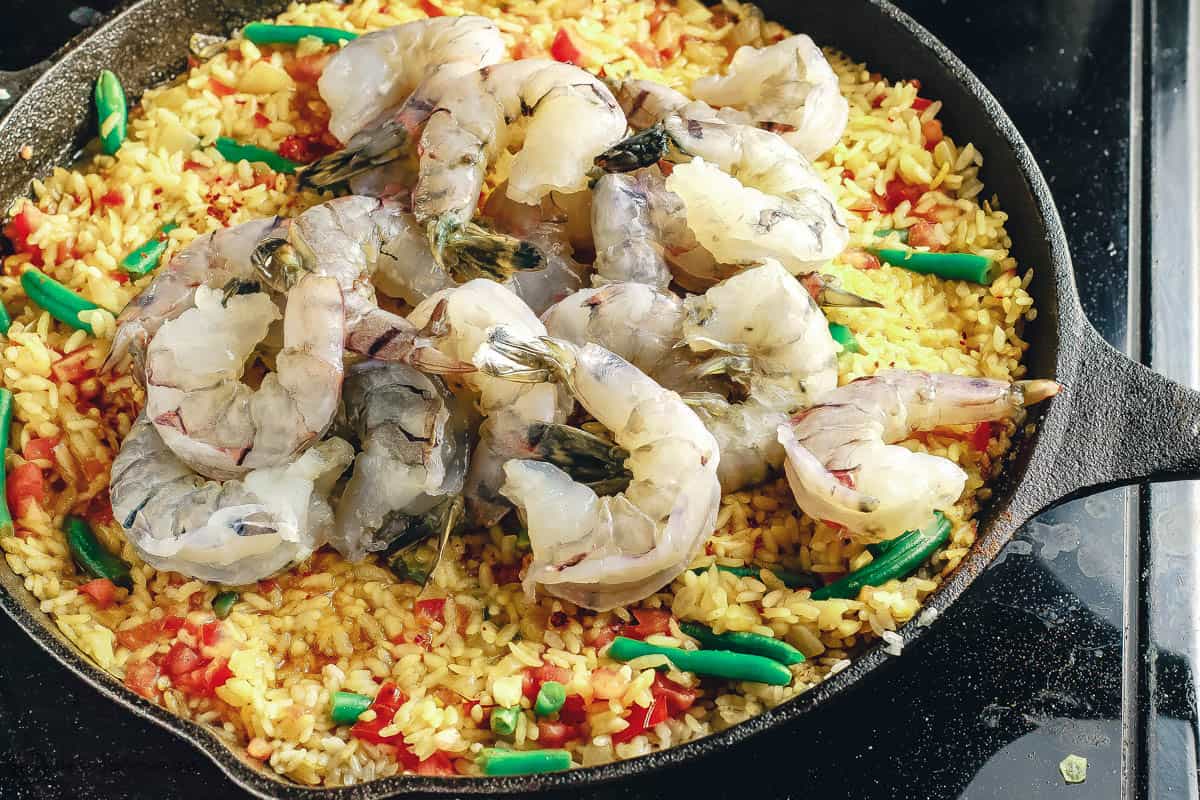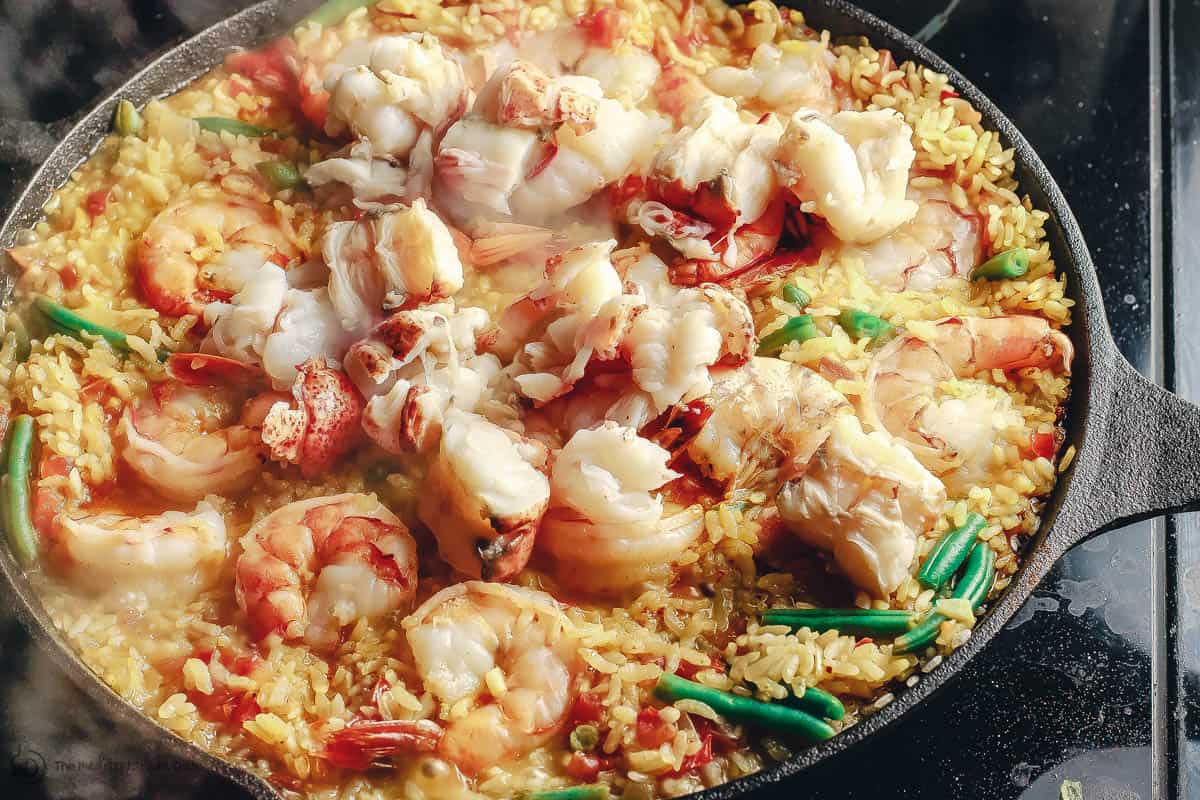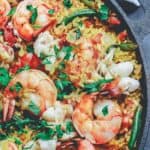This is my personal take on this dish and is different from the traditional, but it offers a few easy tips for the home cook (be sure to check out the tips and video below)
What is Paella?
There are many theories about the origins of this delicious and comforting Spanish rice dish. According to this History of Paella article, paella combines the Roman and Arabic cultures as Arab conquerors introduced rice in Valencia. The word “paella,” may have stemmed from the Arabic word “baquia,” which simply means “leftovers.” And it is said that this meal was introduced by Valencia farm workers as the delicious solution to leftovers. Basically, a one-pot rice meal embellished with whatever ingredients one had on hand. And that’s why, it makes perfect sense that there are many variations of it today. In an article by The Guardian, Valencian chef Llorenç Millo is quoted saying, “paella has as many recipes as there are villages, and nearly as many as there are cooks.” To me, that makes it one of the most exciting and inviting dishes. And I’ll say right off the bat, this seafood paella recipe is my own pared down version, prepared as an easy weeknight solution that does not require a special fire nor a special pan.
What is in paella?
The question that continues to be hotly debated even throughout Spain is: what’s in it? Historically, in Valencia, this dish would have incorporated things like chicken thighs, rabbit, snails and beans (about three kinds of fresh beans). But, as mentioned earlier, paella is the mother of leftover solutions and one-pot meals, and the ingredients will vary from place to place, depending on the traditions and what ingredients are available. Nowadays, particularly in the States, paella is almost always associated with seafood. But, two ingredients are constant:
Saffron: Gives paella its distinct flavor–floral and slightly earthy. It’s expensive, but a little goes a long way! READ MORE: What Is Saffron? An Essential Guide TRY IT: Order from our Spice Shop. Rice. Rice is the single most essential ingredient that makes this dish so comforting and satisfying! But what rice to use can be a tricky choice…
What kind of rice to use?
When you cook paella rice, you’re looking for the end result to be dry, separated rice and not something like a creamy risotto or a sticky rice like you would eat at a Chinese restaurant. That’s why, your choice of rice here is important. The best rice option to use when making this dish is a medium-grain rice that can absorb the liquid while maintaining some bite and firmness. Round Spanish rice could be hard to find, but something like Goya medium grain rice (affiliate link) will work. Long-grain rice is not a good option here.
I take comfort in that paella is one dish you can make your own. In this easy seafood paella, I kept the ingredient list short, focusing on two seafood options: shrimp and lobster. If either is not available to you, feel free to get creative using a firm fish or some mussels or clams. I did not add any chicken or chorizo, but again, if that is something you are looking for, feel free to adapt this recipe (see section below called “variations”). And while, traditionally, this dish is cooked over open fire made of tree prunings, this easy, home-cooked version is simply cooked on the stovetop.
Can you use a wok to make paella? What pan is best?
If you have a paella pan or even a special outdoor paella grill (affiliate links), that would be ideal. But I don’t have one, and found it easy enough to use a sturdy skillet. The important thing is that the skillet you use has a large and even surface, which aids in cooking the rice properly and quickly. That’s why a round-bottomed wok is not a good choice for making paella. It’s not impossible, but if you’re new to making this, you would have better results using a carbon steel pan or a cast iron skillet, which is what I used in this recipe.
How to make Paella: step-by-step
1- The first step here is to get the lobster cooking in boiling water. This will be quick, about 1 to 2 minutes. You don’t want to overcook the lobster, but you’re looking for it to turn a nice pink. When the lobster is cool enough to handle, remove the shell and cut into large chunks to use later. Important: keep the lobster water for later use.
- I like to soak the paella rice in water a few minutes (15 to 20 minutes or so) before using, this helps it cook evenly. Then, to begin making the paella, heat 3 tbsp extra virgin olive oil over medium-high (making sure it’s shimmering but not smoking.) Saute chopped onions first for a couple minutes, then add the rice (drain first). Cook the rice for 3 minutes, stirring regularly. Yes, I am aware that in some recipes you are almost “forbidden” from stirring the rice. But it worked best for me this way. Grateful to Bobby Flay for this tip.
3- Now we add a few more ingredients: garlic and the lobster cooking water first. Then the saffron and it’s soaking liquid along with spices, paprika, cayenne pepper, aleppo pepper, and salt.
- b) Stir in the chopped tomato and green beans. Bring to a boil and let the liquid reduce, then cover (with lid or tightly with foil) and cook on low heat for 20 minutes.
4- Now, we add the shrimp over the rice, pushing it into the rice a little. At this point, if the rice looks to be too dry and might need a tiny bit of water, you can carefully add some. Cover and cook for another 10-15 minutes until the shrimp turns pink.
4- b) Finally, add the cooked lobster chunks. When the lobster is warmed through, turn heat off. Garnish with parsley, if you like.
How to serve it?
Traditions aside, in my house, we serve paella family-style with a favorite white wine or a bit of sangria to go along. Of course, adding a little something to start the meal like chilled tomato Gazpacho is always an option. To finish, try Crema Catalana, Spain’s version of crème brûlée.
Variations
To add Chorizo: dried Spanish chorizo makes a good addition, and you can add them early on in the recipe to get the most flavor. Slice chorizo into thin half-moons and, once you’ve sauteed the onions, add the chorizo and give it a quick cook until it crisps a little, then continue on by adding the garlic, lobster cooking water etc. To add shellfish such as clams or mussels, nestle well-cleaned clams or mussels into the rice at the same time you add the shrimp, making sure the hinge sides are up so they release juices into the rice. Cover and cook until clams and mussels are open (about 6 to 10 minutes.) For more tips on how to buy, store and clean mussels, be sure to check out my Steamed Mussels recipe. To add fish. I’ve been asked if adding fish fillets is an option. If you’re going for a thinner fish like sole fillet, you can cut it up into pieces and add it at the same time you add the shrimp. Make sure you give the fish a little seasoning. Again, you’ll cover and cook a few minutes until shrimp turns pink and your fish is nice and flaky. Chicken Paella: Not all paella needs seafood.
Watch the video tutorial for this easy seafood paella recipe:
You may also like
Spanish Chicken and Rice with Chorizo Mediterranean shrimp and rice Mediterranean-Style Whole Red Snapper Easy Mediterranean Shrimp
Browse all recipes here. Join my free e-mail list
*This post originally appeared on The Mediterranean Dish in 2015, and it has recently been updated with new information and media for readers’ benefit. 4.8 from 80 reviews [optin-monster-shortcode id=”tmhiqurdtx8d1m4p”]
